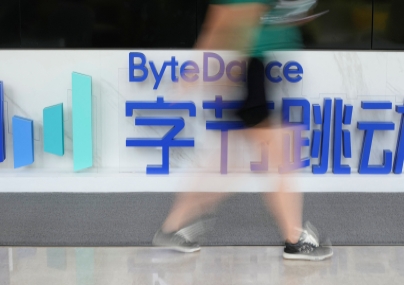
The popularity of IP litigation in Asia has soared of late, with jurisdictions such as China vastly increasing their role on the global stage. Though sectors such as pharmaceuticals have seen a drop over the past decade, others like telecommunications and technology have seen a significant uptick in IP litigation and patent filings, finds Chris Thomson
Patent applications in Asia are unmistakably on the rise. 2015 saw 160,000 applications to the European Patent Office from Asia, a 4.8 percent increase from 2014, while the World Intellectual Property Organisation (WIPO) noted a 1.7 percent rise in Patent Cooperation Treaty (PCT) filings. Last year’s global PCT statistics show that Asia accounts for 48 percent of filings, and the region has more than doubled its contribution towards said applications since 2005. Chinese patent applications have also risen 30-fold this century, mainly coming from the telecommunications and technology sectors.
Rebecca Tse, senior manager for product promotion at the Hong Kong Trade Development Council (HKTDC), says that along with increased corporate spending on research and development, Asian companies have become more acutely aware of the commercial value and IP protection. “Asia has been the fastest growing region in the world in terms of its number of IP applications, be they patents, trademarks or industrial designs. This is widely seen as indicative of the business potential of Asia’s IP market for both domestic and international IP owners, as well as service suppliers,” she says.
It is clear then that interest in patent filings and demand in Asia, particularly in China, has gone up. “Some of the top PCT applicants are Chinese companies in the industry sectors of telecommunication and electrical apparatus,” says Baker & McKenzie partner Isabella Liu. “As part of the national intellectual property strategy, the Chinese government has been providing incentives for IP creation and acquisition, e.g. in forms such as tax benefits and additional governmental research and development funds when Chinese companies obtain patent rights. Meanwhile, Chinese companies have also become more aware of the value of patent rights in market competition, especially in overseas markets where many have had to defend against infringement actions.”
This sentiment is echoed by Matthew Laight, a partner with Bird & Bird. “Protection and monetisation of innovation has now become a board-level topic in many companies in China and more broadly in Asia.” he says. Liu notes that this trend is likely to persist as China continues its transformation “from being capital investment/export-led to a more balanced economy that is consumer-driven and service-oriented.”
Back to topGAINING IMPORTANCE
The pace of IP’s growth in China and Asia recent years is faster compared to its growth in the previous decade. In addition, lawyers believe that the technology and telecommunications sectors will continue to become more significant in China.
Laight says that holding a patent portfolio, either by registering patents on innovation or through acquisition, is particularly important in the electronics and communications industries. “A mobile phone, for example, is covered by hundreds of patents, many of which are standardsessential patents. Large Chinese companies like Huawei, ZTE and Xiaomi have all made considerable efforts to bolster their patent portfolios, in part to strengthen their position in bilateral cross-licensing discussions,” he notes.
And the demands on law firms will be even greater. Liu believes that law firms that have strong IP and patent capabilities and have on-the-ground presence in China as well as in markets that their Chinese clients are targeting will naturally be in a better position to assist their clients’ IP needs. “As China transforms into a sizeable consumer market and its judicial system continues to mature, the number of patent litigation and invalidation actions will rise in China,” says Liu. ”Invalidation has become a common defence strategy among Chinese companies across industry sectors both in China and abroad.”
Back to topOTHER SECTORS
Clearly, technology and telecommunications are the forefront when discussing IP in Asia, especially in China. This, however, was not always the case. “Back in the early 2000s, we were involved in numerous multi-jurisdictional cases involving pharmaceutical companies,” says Laight. “The driver then was to prevent generic manufacturers from entering the market before patents had expired,” which within a decade “was overtaken by disputes in the electronics and communications industry, where the main driver is establishing fair royalty rates for use of standards-essential patents.”
Design patents also have serious implications on IP laws in Asia. Bird & Bird, for example, are frequently involved in design patent and invention patent litigation in China, specifically in the household goods and personal care products sectors.
“With so much manufacturing taking place in China, there is a constant problem of innovative designs being copied,” says Laight.
Back to topLAW FIRMS BENEFIT
While China is seeing the biggest surge in patent filings and IP litigation, IP activity in other Asia-Pacific jurisdictions such as Hong Kong, Australia, Japan, Taiwan, Malaysia and India is likely to grow exponentially.
Litigations are also going global, and this means that patent lawyers should also beware of EU and U.S. regulations.
Law firms with strong IP backgrounds are benefitting from the skyrocketing popularity of IP litigation in China, and this trend is expected to continue. Patent litigation has become stronger, with telecommunications, particularly mobile device protection, overtaking pharmaceuticals as the most popular sector.
And as the world becomes more integrated – China with the rest of Asia, and Asia with the rest of the world – patent protection and litigation are only bound to increase in importance, so expect more lega work in the future.
Back to topASIA ON THE ATTACK
Until recently, Asian companies, more often than not, were on the defending side when it came to IP litigation, with companies from Asia- Pacific jurisdictions often being accused of violating patents. Now, however, Asian companies, in particular Chinese technology companies, are often on the attack in either domestic or international cases.
“There was a time where foreign multinationals would not contemplate litigating in China,” says Bird & Bird partner Matthew Laight. “Now, China has become a mainstream jurisdiction to sue for patent infringement, even between foreign companies. Chinese multinationals have also become more active in litigation both inside and outside China.”
Government backing has played a role in China, but Hong Kong’s bid to become an IP management hub has seen it try to secure some of the business. “Hong Kong has long been a regional marketplace for IP trading, which is manifested in forms of copyright trade, licensing and franchising, technology transfer and design services,” says Rebecca Tse, senior manager for product promotion at the Hong Kong Trade Development Council (HKTDC).
Isabella Liu, a partner with Baker & McKenzie, says that patent ownership tends to give Chinese companies more bargaining power when being sued for patent infringement. “Having a broader patent portfolio in crowded sectors such as telecommunication and electrical apparatus can facilitate settlement negotiations and may result in the parties entering into cross-licensing arrangement,” she explains. She also foresees an “increasing number of proceedings involving Chinese companies in key overseas markets such as the U.S. and Germany.”
But China is not the only country active in this space, notes Laight. “ We are active in patent litigation in many jurisdictions in Asia-Pacific. Australia, Japan and Taiwan are particularly active, but so also are Malaysia and India.”
This regional trend shows no sign of slowing down – a development that many firms have observed as they work to improve their foothold in the practice area. It is also noteworthy that although China’s IP popularity often relates to mobile devices, for the same does not hold true in other Asian jurisidictions. In India, for example, patent litigation is far more likely to centre around the manufacturing sector.
Back to top


